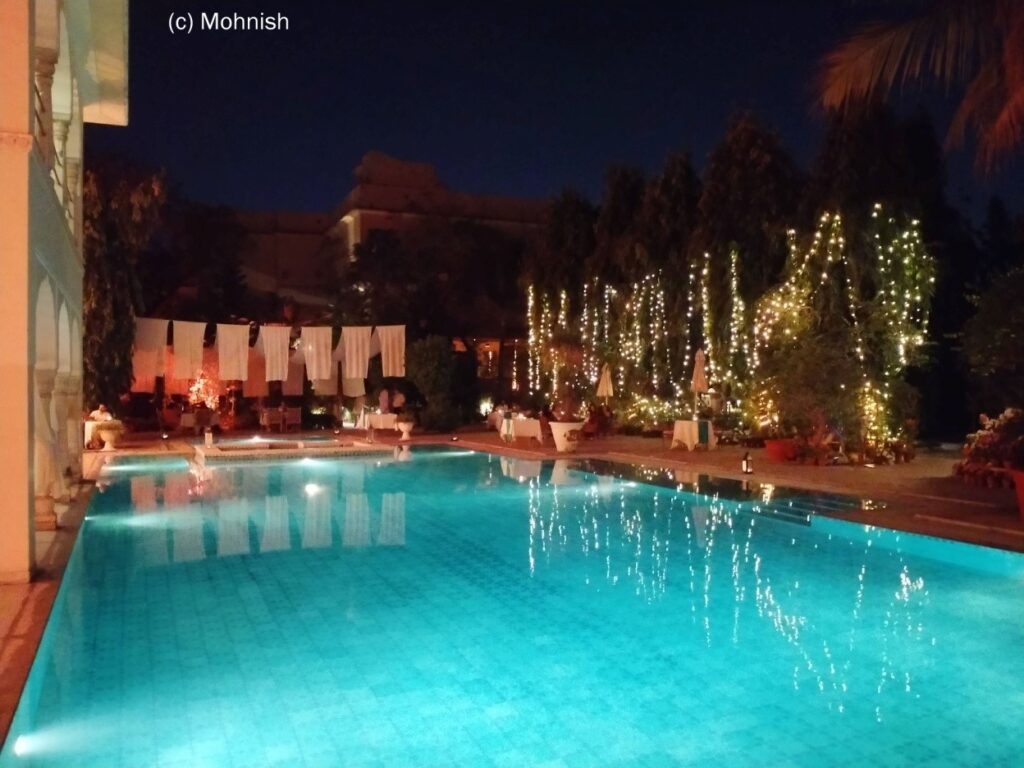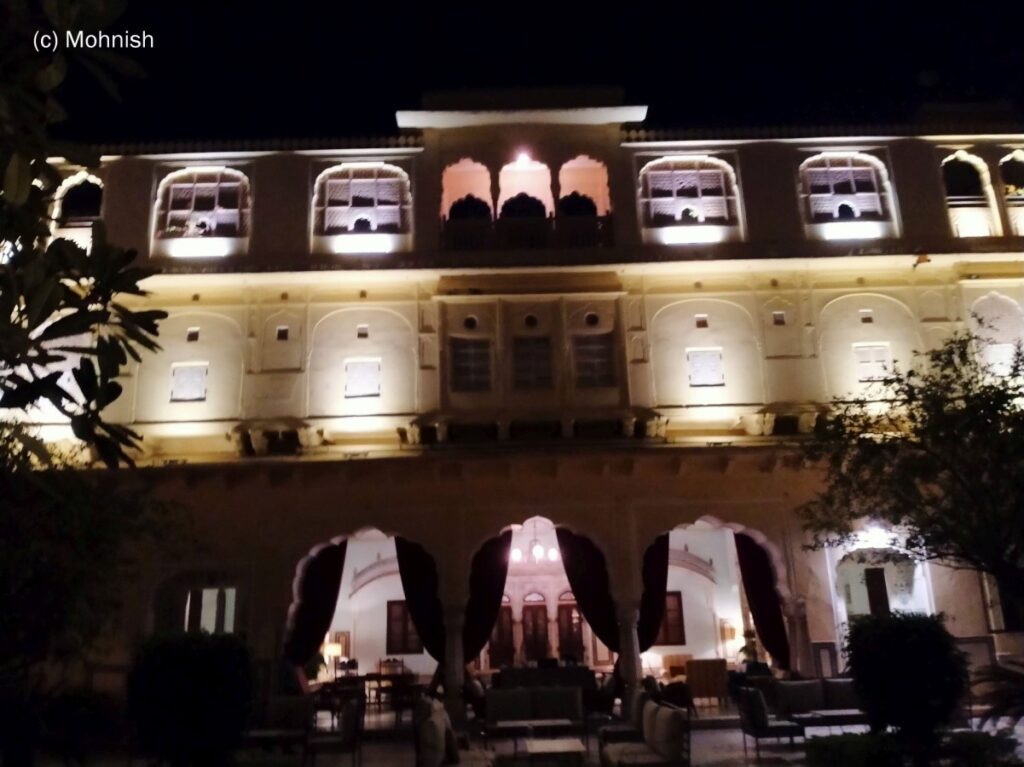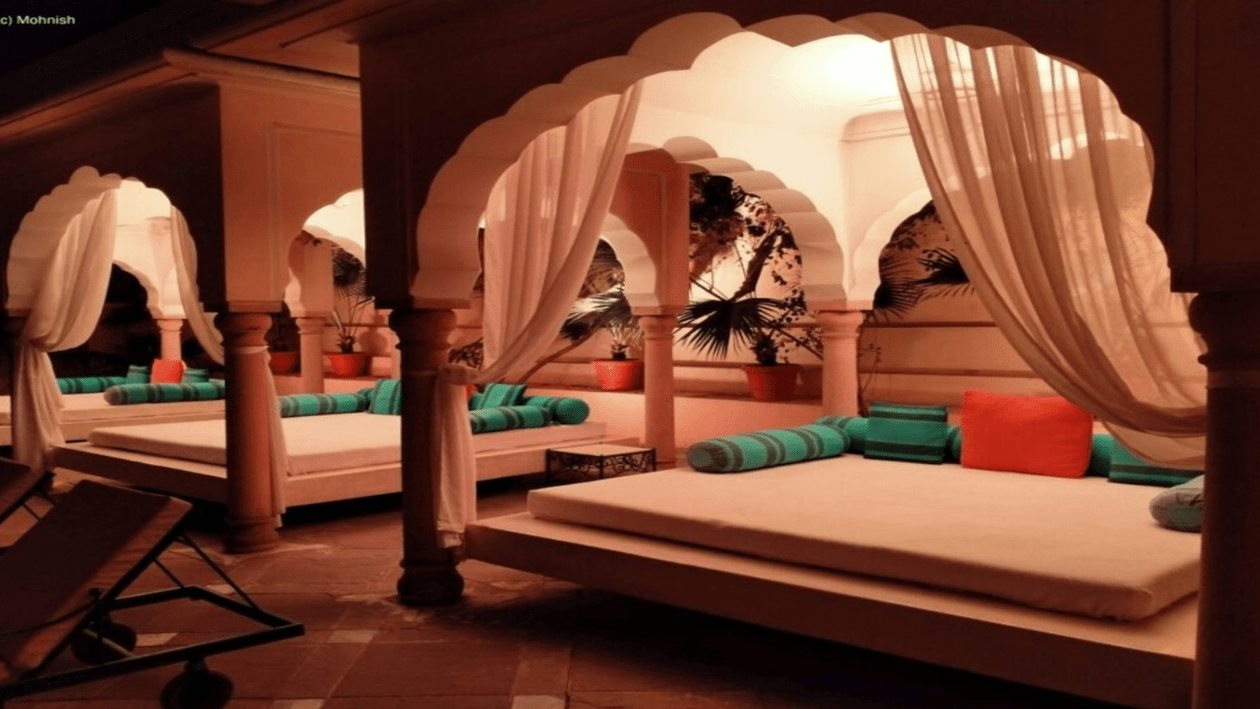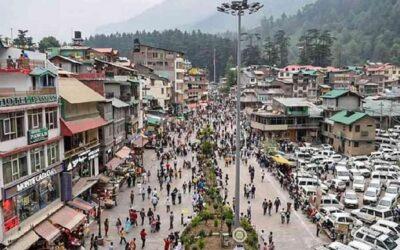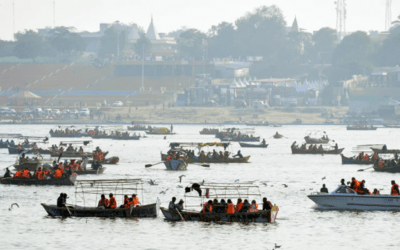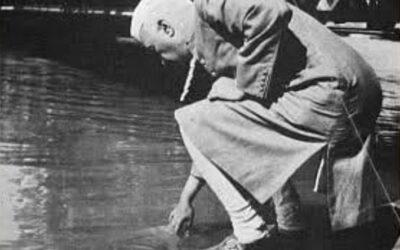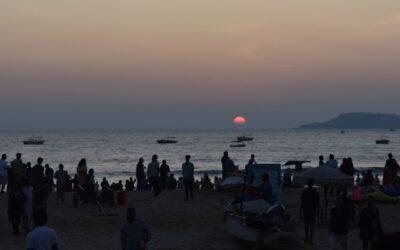Day 2 Begins
The next morning was our chance to try Park Inn’s breakfast for the first time, and it was tasty. Our itinerary began at around 9:45 a.m., and the first stop of Jaipur Sightseeing was Amer Fort. It is roughly 15 km away from our hotel (a good distance by Jaipur standards!) and has a mixture of good and bad roads. As soon as we arrived at Amer Lake, a middle-aged guide named Bhawani Singh immediately came to us to take us around and explain the whole area. We finalized the deal with him at INR 200 and took him along in our car.
Places Visited Map, Jaipur Tourism
- Amer Fort
- Jaigarh Fort
- Albert Hall Museum
- Samode Haveli
The first stop on our guided Jaipur tourism was the Panna Meena Kund. The architecture here is pretty similar to the Chand Baori in Abhaneri, with a stepwell below. Meena is a community of people living in the surrounding village area. The place was primarily a photo-op, and we moved on after a few clicks in roughly 10 minutes.

As we parked and entered the fort, we got to know that part of the well-known Bollywood film Manikarnika was shot there. Amer Fort was erected during the reign of Raja Man Singh, close to 970 CE. Although the original palace was by Man Singh, additions have been made by Sawai Jai Singh.
The fort was at a height and roads were deliberately made rough for the elephants and horses in those days. We were first taken to the Diwan-i-Aam, which was commonplace for the king’s meetings with the public. It was the place where large festival gatherings and victory celebrations would take place. Due to these huge spaces, it would also take attackers longer to get to the royal family.


Standing at the Sheesh Mahal, we could see the Ganesh Pol, which is the gateway towards the huge palaces inside and signifies Lord Ganesha. Mr. Bhawani told us that the structure of the gate showcases a fusion of Rajput and Mughal architectural styles. This was the entry point towards the three palaces, where we saw Sheesh Mahal.

Sheesh, Mahal, or the Glass Palace is yet another magnificent piece of architecture in this vast courtyard. It is a part of the Diwan-i-Khas, which was the hall for private audiences. There are mirrors all around the Sheesh Mahal and inside it. Due to the mirrors, lights were never necessary inside the structure. The iconic song “Pyar Kiya to Darna Kya” from the film “Mughal-e-Azam” was shot here. Burning candles here creates a reflection akin to thousands of stars on the ceiling, which Mr. Bhawani showed to us using mobile phone torch lights. Mr. Bhawani took wonderful pictures of each one of us as we stood independently under the mirrors.

There was a beautiful garden outside the Sheesh Mahal. Here, a drain for rainwater harvest for the garden and for all palaces could be seen. On one side of the garden is the Sukh Niwas, a place where the king would relax with his queens. At the rear part of the fort is the Zenana, the place for all the queens to stay. Each room was meant for a queen and the king could meet whomever he wanted without the other getting to know. A pavilion for the women to meet was located at the center of the Zenana.

From the top of the Amer Fort, we could see Maota Lake where sound and light shows are on display every evening. The architecture near the lake looks beautiful from a distance.

An open-air passage to connect Amer Fort with Jaigarh Fort is present, but it was closed at the time we were there. Plenty of shops for souvenirs are also present.
Note: Amber Palace is the same as Amer Fort. Tourists were responsible for shortening it from Amber to Amer, as per our guide.
Jaigarh Fort
The next stop on our itinerary was the Jaigarh Fort, and we had caught a glimpse of it from Isarlat.
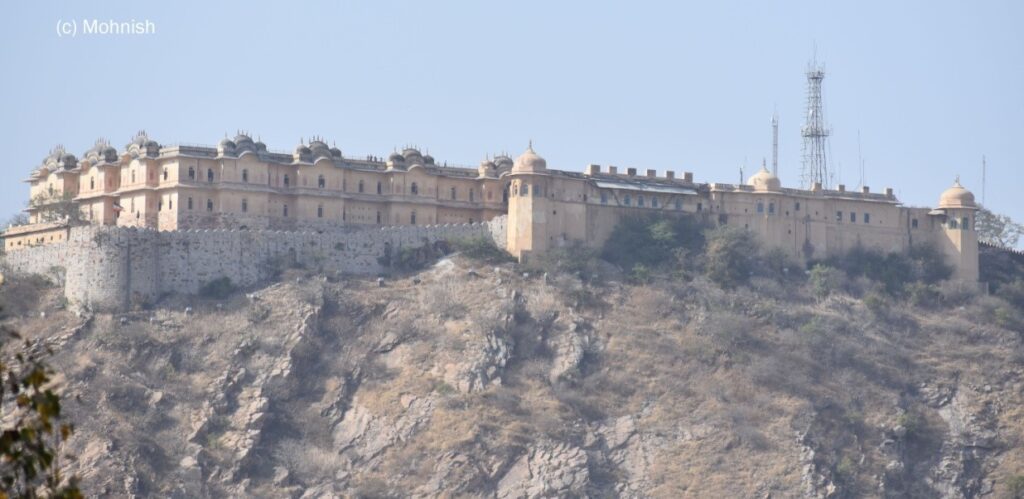
View from Isarlat
We dropped off Mr. Bhawani Singh at Maota Lake and started our drive towards Jaigarh Fort, which was down the hill. People driving here for the first time should remember to drive as they do in the hilly areas, with lane discipline. After a few km, we noticed a board that showed Jaigarh to our right, while the GPS showed straight. Acting on instinct, I took a right and a few km. ahead, the distance suddenly decreased on our GPS!
The narrow and winding road here took us all the way towards the fort. We encountered a circle on the way, and as we were wondering where to go, a young-looking guide approached us. At a cost of INR 150, he was willing to take us across the fort and also keep explaining along the way. Later, we realized how good a job Hansraj did as he took several interesting pictures of us together too.
While on his bike, Hansraj led us to the ticket gate. From the gate, he sat in our car and showed me the direction to drive inside the fort. It is truly unique that visitors are allowed to drive through several parts of this fort.
After parking the vehicle, the first attraction we saw was the Jaivana cannon. Although it was fired only once for testing purposes, it was the world’s largest canyon on wheels in the 18th century. The main purpose of the Jaigarh Fort was to protect the Amer Fort. ‘Shubhat Niwas’ was the name of the area where warriors would assemble. Hansraj also told us about a massive gold treasure that was located beneath the fort, close to a well. It is said that the treasure is now in the hands of the Govt. of Rajasthan after having discovered it in the 1970s.

In terms of architecture, red sandstone is very clearly visible all over the fort, unlike marble and sandstone in the Amer Fort. Structures such as Lalit Mandir, Vilas Mandir, Aram Mandir, and Laxmi Vilas that were used in those days are still present, though not in use.

One of the distinguishing features of the Jaigarh Fort is the Bhool Bhulaiya, as each room has multiple exits and entries. The purpose of this structure was also to confuse the enemies, in case they were able to invade the fort. He confidently guided us around and showed us the rooms.

While walking across the courtyards, we saw how the king and his staff would sit together to eat, in the form of statues. A number of rooms with statues depicting the royal lifestyle were visible.
Pre-wedding Shoots
The walls of the Jaigarh Fort are pretty long and they seem unending. A few pre-wedding shoots were taking place outside, giving us a glimpse of the beauty of the fort as a backdrop. Hansraj told us about the shootings of Bollywood films here, including Khuda Gawah and Bajirao Mastani. Beautiful cenotaphs are present across the area, allowing individuals to take respite from the Sun.
We had noticed the Jaigarh restaurant here and asked Hansraj about it after 2 p.m. He showered praise upon the Lal Maas being served here, stating that it’s very different from others. We finally decided to take his word for it, and ordered for Lal Maas, Bajra Rotis, and Naans without looking at too much of the menu. As it turned out, the taste was simply out of this world.
Hansraj took us to the Rajasthali Emporium here, which was the last leg of our trip. My wife looked at several khadi sarees and decided to buy a few. Once done, we thanked Hansraj and started back on our way to the hotel.
Evening Out
Roaming around in the Sun throughout the day had taken a lot of us and we decided to head towards the hotel. On the way back, we stopped near the beautiful Jal Mahal for a few minutes. Since special permission is necessary to visit the Jal Mahal, ¾th of which is underwater, all we could do is click from outside, standing next to the Man Sagar Lake.

After a few shots of the mahal, we moved to freshen ourselves up for the evening. Our plan was to sleep for a few hours and then see the Albert Hall Museum as well as dine at the Samode Haveli. After changing clothes we slept like logs for 1.5 hours, waking up at 7 pm for the evening.
Albert Hall Museum
The evening began with our visit to the Albert Hall Museum at around 8 p.m. From a reasonable distance, the changing light colors on the entire building looked marvelous. Artifacts were present on the ground, first, and second floors here. The highlight of the evening for us was a preserved mummy on the second floor.

Interestingly, this was a 2,300-year-old mummy that was brought to India in 1883. It was gifted by the curator of the museum in Cairo to Sawai Ishwar Singh, Jaipur’s ruler at that time, to showcase at an exhibition. Last year in August, it was removed from its box for the first time in 130 years to prevent it from drowning during heavy rains. The mummy belongs to Tutu, who was a teenage girl in the Ptolemaic Dynasty.

The following galleries are available to see here:




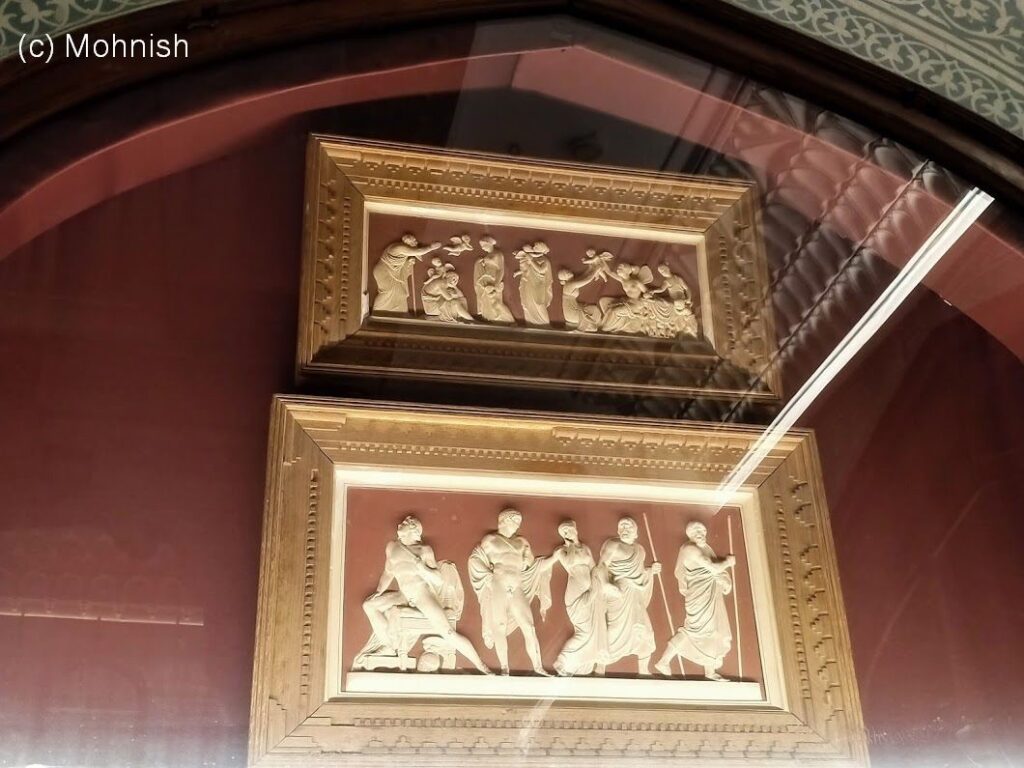
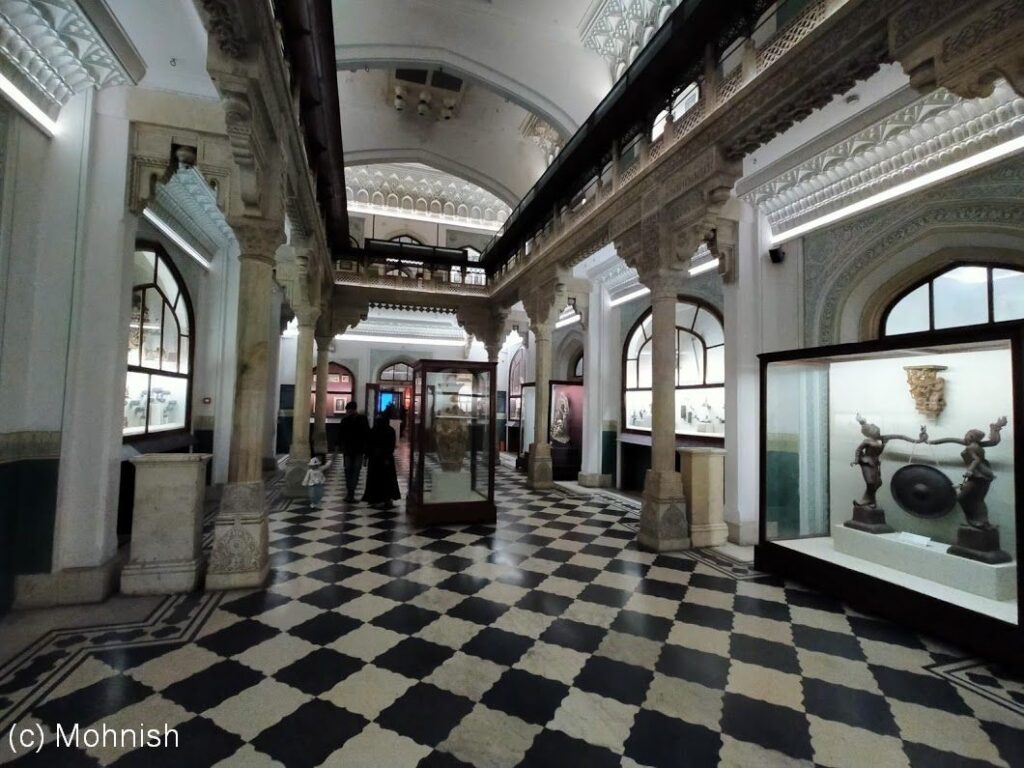
After absorbing so much information over a period of an hour or so, our stomachs started growling and we headed towards Samode Haveli, the last outing for Day 2. Though the initial plan was to sit inside an air-conditioned room, the dinner at this gorgeous Haveli was being served by the poolside. It was still pleasant on the outside, this being the first week of March. As expected, the lighting and the ambiance around this fine-dining restaurant were beautiful. We also got to request Sufi music from a live pair of musicians playing by the poolside.
Our evening began with 650 ml of Kingfisher Lager beer and a couple of vegetarian starters. For the main course, my wife asked for Garlic Naan and Lehsuni Dal, while I gorged on Fish and Chips. All items were cooked to perfection and we were very happy with the taste, quality, freshness, and all other parameters. I will let the pictures do the talking from here onwards.
